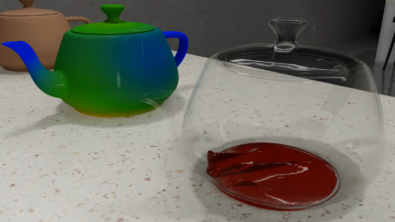So, you want to predict component temperatures do you? Part VI
On the sliding scale of thermal component model representation king of all is a ‘detailed’ model. A 3D definition of all of the internal construction geometry and material properties does away with any of the accuracy inconsistency issues associated with the derived CTM (thermal resistor network type) approach.
Despite the fact that all models are wrong a detailed model representation of a package is least wrong and comparatively the best. Each internal part of the package construction is defined by its 3D shape and a material property. For steady state thermal simulation all that is required is the thermal conductivity. If transient thermal prediction is required then in addition the specific heat (J/kgK) and density (kg/m^3) is also required. Specific heat is the amount of energy (Joules) required to heat 1 kg of the material up by 1 degC (Kelvin = degC in terms of temperature differences), i.e. smaller values mean that it will heat up quicker.
Going back to the Cavity Down CBGA example shown here let’s look at the detailed model in more … detail:

The silicon die is packaged and connected down to the PCB by a number of different parts:

Each part is represented by the 3D model thus capturing all of the possible conduction paths the heat may take and the various thermal resistances the heat would experience as it travels down those paths.
OK, I admit it, even what is currently considered a state of the art detailed model does not model every part within the package explicitly. This is due to lack of data availability and 3D EDA interfacing technology and somewhat restricted by computational simulation capabilities (RAM and processor speeds for the actual CFD simulation of the temperatures) . Such ‘not as detailed as they actually are in reality’ differences might be:
- Die is modelled as a single block of Silicon material with the total power smeared over the active surface or at most partitioned into the main functional groups
- Solder balls are modelled as square but with preservation of overall thermal resistance or even the whole ball grid array might be modelled as a single cuboid with a thermal conductivity representative of the solder balls and the (static) air between them
- Bond wires and leadframe modelled again as a lumped objects with a modified often orthotropic thermal conductivity to account for the actual thermal resistances
The main advantage of a detailed model is the improved accuracy of temperature prediction and the fact that temperatures are predicted at all points within the package, not just a typical case temp of a block representation or individual nodal temperature points of the CTM:


The main downside is that by the very nature of the detailed representation, information that is often considered proprietary such as die size, die attach method etc. is apparent. Package vendors don’t really like waving their IP around in public and this has been the main reason why such models, although desirable from a thermal simulation perspective, are not in common place usage by systems integrators performing their thermal analysis.
The good news is is that we provide a tool called FloTHERM.PACK (formerly FloPACK) that can be used to parametrically specify a package and to have that tool provide either a detailed model, 2R or DELPHI. It is this tool that has been used extensively in this blog series. Sign up now for a free trial!! The intention of FloTHERM.PACK was more to encourage package vendors to create and publish thermal metrics and models of their packages that would then be used by their clients / systems integrators. In reality about 50% of the usage of FloTHERM.PACK is by end users who aren’t supplied good quality thermal information from their package vendors but who are in desperate need of such info.
There are a range of options for component modelling, the one you chose will likely be chosen due to the lack of thermal data availability. If in doubt, ask your supplier for a detailed model, see what happens.

Hampton Court, 17th December 2009


